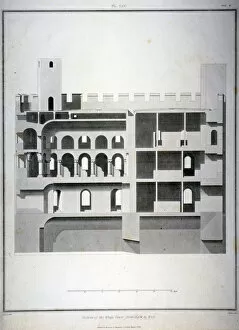Frederick Nash Collection
Frederick Nash was a renowned artist and architect who left an indelible mark on the architectural landscape of England in the early 19th century
All Professionally Made to Order for Quick Shipping
Frederick Nash was a renowned artist and architect who left an indelible mark on the architectural landscape of England in the early 19th century. His meticulous attention to detail and ability to capture the essence of historical buildings made him one of the most sought-after artists of his time. One of Nash's notable works is the North-east view of St Georges Chapel, Windsor Castle, Berkshire, painted in 1804 by J Jeakes. This masterpiece showcases Nash's talent for capturing intricate architectural details with precision and grace. Another remarkable piece by Nash is the Plan of the cells under the chapel of the White Tower, Tower of London, completed in 1815. The artist skillfully depicts every nook and cranny beneath this iconic structure, offering a glimpse into its hidden secrets. Nash's expertise also shines through in his Longitudinal section and Transverse section drawings of St Johns Chapel in the White Tower. These illustrations provide a comprehensive understanding of this historic place within Tower Hill. In addition to his work at the Tower of London, Nash contributed significantly to documenting other important landmarks such as Westminster Abbey and St Jamess Church. His Interior view looking east at St Jamess Church captures both its grandeur and spiritual ambiance. Nash's talents were not limited to architectural renderings; he also excelled at capturing everyday scenes from history. One such example is his View Oliver Cromwells house in Clements Lane, Westminster - a snapshot that transports viewers back to c1840s London. Lastly, we must mention Nash's Interior view Jerusalem Chamber Westminster Abbey painting from 1805 which offers an intimate look inside this sacred space filled with rich history and religious significance, undoubtedly a masterful artist whose contributions continue to inspire awe today. Through his detailed depictions and unwavering dedication to accuracy, he has immortalized some of England's most treasured landmarks for generations to come.
















































